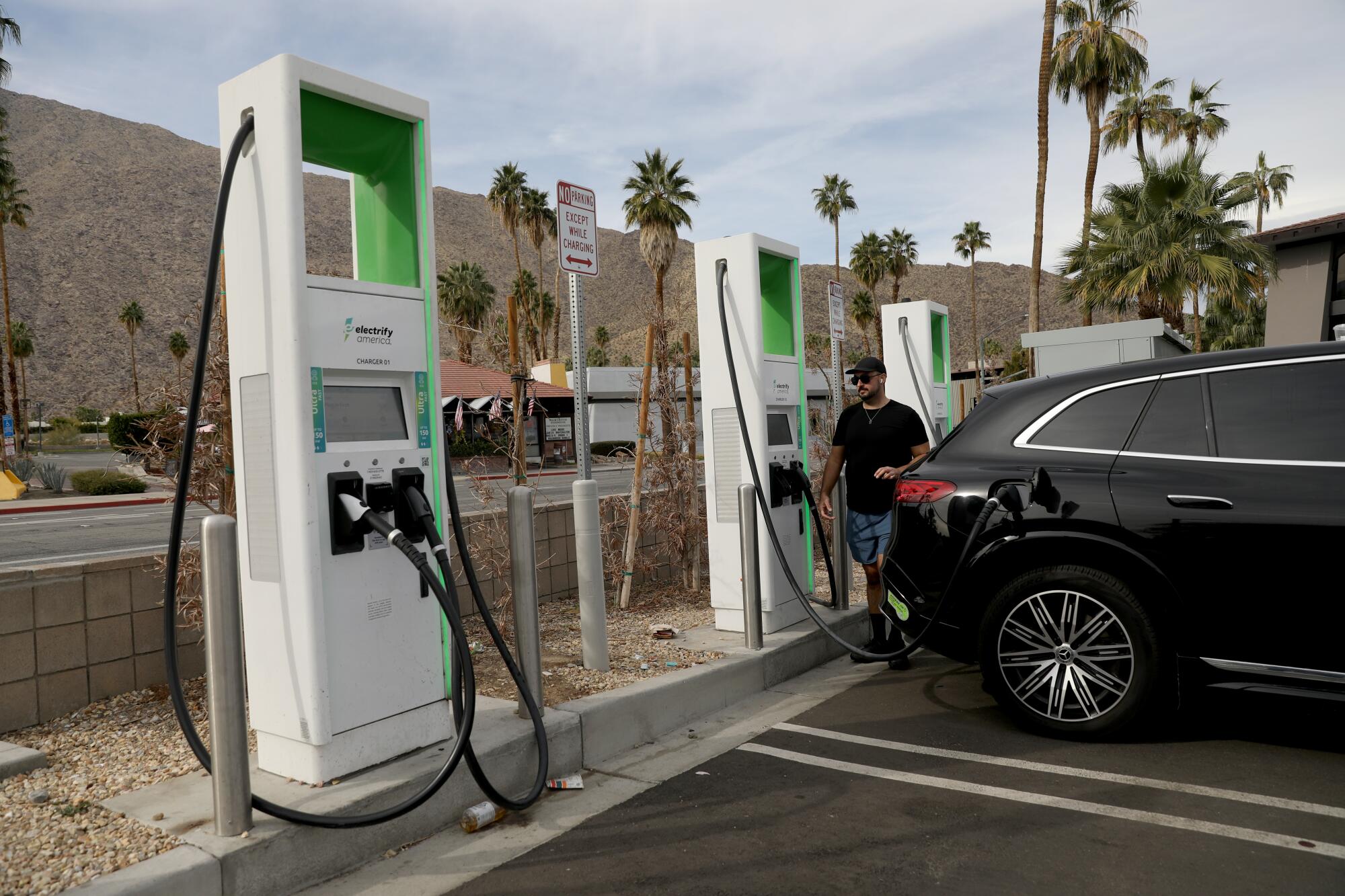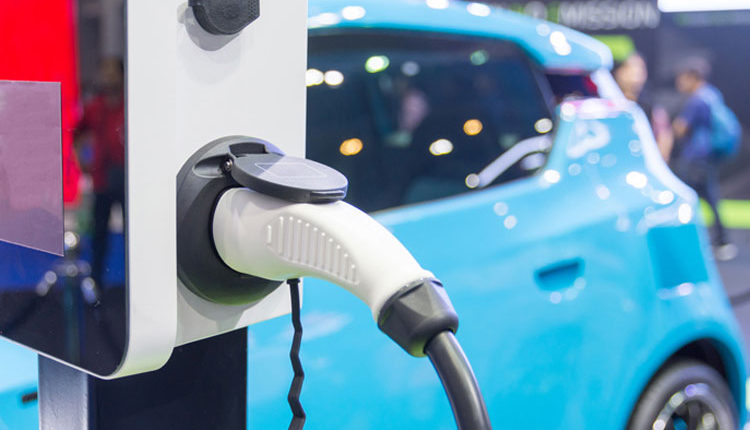Top EV Charging News: Secret Updates on Framework and Innovation

Recent Developments in Fast-Charging Innovation

Additionally, advancements in battery innovation, consisting of improved thermal administration systems and greater energy density batteries, enhance fast-charging capacities. These developments alleviate the threat of battery degradation throughout quick charging, ensuring durability and efficiency for EV proprietors.
Additionally, the combination of clever billing solutions is improving customer experience, making it possible for real-time monitoring and dynamic prices versions. EV Charging news. This adaptability allows chauffeurs to enhance billing prices and times based on grid demand
As automakers remain to purchase fast-charging networks, the collaboration between sector stakeholders is crucial. Partnerships between charging station companies and automotive makers are paving the method for substantial insurance coverage, inevitably cultivating an extra durable EV ecological community. These advancements are pivotal in sustaining the change to lasting transport.
Government Initiatives for Charging Expansion
Federal government campaigns play an essential duty in the development of electrical car (EV) charging infrastructure, facilitating the transition to lasting transport. Different federal and state programs are being implemented to enhance billing availability, minimize the financial burden on customers, and advertise the adoption of electric lorries.
Especially, the U.S. government has actually designated considerable funding via the Facilities Investment and Jobs Act, which sets aside $7.5 billion for EV charging network development throughout the nation. This financing is intended at deploying hundreds of new billing terminals, particularly in underserved locations, thus addressing array stress and anxiety amongst prospective EV buyers.
In addition, various states are establishing regulations to streamline the allowing process for charging terminal setups, which is crucial for increasing deployment. Motivations such as tax credits and refunds for both consumers and services are additionally being introduced to urge the installation of billing framework.
Additionally, public-private collaborations are increasingly ending up being an emphasis, leveraging private financial investment to complement government financing. These campaigns underscore a collective strategy vital for constructing a reliable and comprehensive EV charging network, ultimately adding to a greener and more lasting future.
Cutting-edge Battery Solutions Enhancing Effectiveness
Changing the landscape of electrical automobile (EV) modern technology, innovative battery options are significantly enhancing effectiveness and efficiency. Breakthroughs in battery chemistry, specifically with lithium-sulfur and solid-state batteries, are leading to enhanced energy thickness, which permits for longer arrays and faster billing times. These brand-new battery kinds have the possible to outshine typical lithium-ion batteries by offering higher capacities while reducing weight, thus enhancing general car effectiveness.
Additionally, advancements in battery administration systems (BMS) are enhancing energy usage and extending battery lifespan. Intelligent formulas check battery wellness and efficiency, allowing real-time modifications to charging and discharging procedures. This not just improves the effectiveness of the battery but also ensures an extra trusted and lasting energy resource for EVs.
In addition, the combination of recycling technologies is resolving the ecological impact of battery manufacturing and disposal. Technologies in second-life applications for EV batteries are facilitating their use in power storage systems, contributing to a round economic climate.
As these innovative battery remedies remain to evolve, they assure to transform the EV market, making electrical automobiles much more accessible and enticing to a wider audience while sustaining global sustainability objectives.

Cooperation In Between Automakers and Billing Networks
Identifying the critical need for a robust billing framework, car manufacturers are significantly teaming up with billing network providers to enhance the EV possession experience (EV Charging news). These collaborations intend to produce a seamless charging community that benefits consumers and sustains the change to electrical automobiles
Major automobile brands are signing up with Your Domain Name pressures with well established charging networks to expand their charging terminal coverage, ensuring vehicle drivers have access to reputable and convenient charging choices. Partnerships with networks like ChargePoint and Electrify America allow car manufacturers to integrate billing options directly right into their cars' navigating systems, assisting users to the local stations and giving real-time accessibility updates.
Furthermore, these cooperations typically result in the advancement of fast-charging technologies that dramatically decrease the moment needed to charge an EV. By pooling resources and proficiency, car manufacturers and charging networks can innovate much faster, creating remedies that meet the expanding need for electric wheelchair.
In addition, joint efforts might also cause even more standardized charging methods, which can reduce customer complication and promote wider EV fostering. Overall, these tactical partnerships are crucial in building a effective and straightforward billing framework that meets the requirements of a broadening electrical lorry market.
Challenges Dealing With EV Charging Facilities
As the electrical lorry market continues to grow, a number of difficulties are emerging that prevent the growth of a comprehensive charging infrastructure. One of the main challenges is the inadequate variety of billing terminals, specifically in country and underserved city locations. This void develops array anxiousness amongst possible EV customers, hindering them from making the button.
In addition, the absence of standardization in billing modern technology makes complex the facilities landscape. Variations in plug types and charging speeds can develop complication for customers and boost operational complexities for billing network drivers. In addition, the assimilation of billing stations right into existing electric grids postures substantial difficulties. Several areas deal with capacity constraints, calling for considerable investments in grid upgrades to suit boosted demand.
Another pushing issue is the high price connected with the installation and upkeep of charging terminals, which can be a barrier for both exclusive companies and public entities. Finally, governing obstacles and zoning constraints can delay the release of charging framework, hindering progression in broadening essential official source solutions. Dealing with these obstacles will certainly be important for cultivating a robust EV environment that sustains the transition to sustainable transport.
Conclusion
To conclude, the continuous innovations in EV billing technology, supported by considerable government efforts and ingenious battery remedies, are crucial for the expansion and efficiency of electric car facilities. Partnerships between automakers and charging suppliers additionally boost terminal protection, attending to the expanding demand for easily accessible charging choices. Despite challenges that persist within the EV charging landscape, these growths indicate a favorable trajectory in the direction of a much more sustainable and efficient electrical automobile community.
Developments in charging framework have actually led to the advancement of ultra-fast chargers capable of supplying up to 350 kW of power, substantially minimizing charging times. Variants in plug kinds and charging speeds can create confusion for users and boost functional intricacies for billing network drivers.In final thought, the ongoing improvements in EV billing best site modern technology, sustained by significant federal government initiatives and cutting-edge battery remedies, are important for the expansion and efficiency of electric automobile infrastructure. Collaborations in between car manufacturers and billing companies further enhance terminal protection, attending to the expanding demand for easily accessible charging alternatives. Despite difficulties that linger within the EV charging landscape, these growths indicate a positive trajectory towards an extra effective and lasting electric car ecological community.